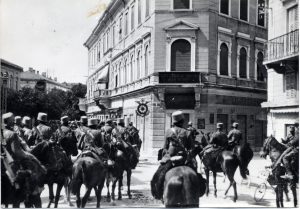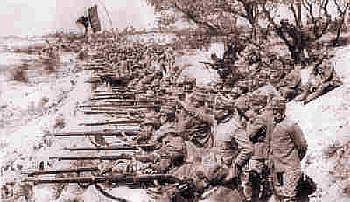

Rudyard Kipling, Epitaphs of the War (1919) Nevertheless, Erwin Rommel, a later practitioner of blitzkrieg tactics, came to prominence in the final battle, where he won the Blue Max. Partly because of this remarkable success, and partly because of the Hutier tactics that were introduced during the operation, it has been claimed that Caporetto witnessed the birth of blitzkrieg, but in truth this is a misunderstanding of that military concept. At Caporetto, in the final battle of the campaign, the Austro-Hungarian Fourteenth Army, commanded and supported by German troops, achieved one of the few major breakthroughs of the First World War on any of the western fronts. For that reason a separate chapter is devoted to the terrain and the conditions facing the combatants.Īfter more than two years of exhausting combat, with little territorial gain for either side, the Isonzo campaign reached a dramatic climax. Understanding the terrain of the battlefields is essential to an appraisal of the whole Isonzo campaign. In the Alps many died in avalanches, not from enemy action. The casualty rates were horrendous, in parts of the front more than matching the slaughter endured on the more familiar battlefields of the Western Front. ‘Verdun on a mountain top’ would be an apt description of much of the battlefield, while a soldier’s view of the campaign would focus on the fiercely contested, close proximity fighting in ferocious terrain and appalling weather. It was certainly the greatest mountain campaign in history. Historically, by whatever measure is selected, the twelve battles of the Isonzo river between 19, culminating in the battle of Caporetto, comprise one of the world’s major military campaigns. Of course, the emphasis is on the love story and so the historic elements are little more than background detail.

The film version of the book used Caporetto as its background, and was evocatively accurate about the conditions on the battlefield.
#The battle of the isonzo driver#
But this author believes that there is a need for a shorter, highly illustrated, book that captures the emotional impact of the conflict yet respects the wider political and military background.Įrnest Hemingway’s brilliant novel A Farewell to Arms was based on his own experiences as an ambulance driver during the latter stages of the campaign on the Asiago, and on stories he was told by Italian veterans.

There are a couple of good, highly detailed, academic hardbacks on the campaign and they are worth studying. Today more people are visiting the area and becoming emotionally involved in its beauty and dramatic history. This is one of the forgotten battlefields of the First World War. Many books and academic treatises have been written about the First World War but there are relatively few on the Isonzo campaign. Since the end of the First World War this attitude has persisted. Throughout the First World War the conflict between Italy and the Habsburg (Austro-Hungarian) Empire was of little importance to the politicians, the generals, the press and the nations of the western alliance. Caporetto and the Isonzo Campaign examines an aspect of the First World War that was pivotal in the history of Italy, Austria and the Balkans.

The intervention of British, French and German troops is covered, as are the parts played by famous individuals, including Erwin Rommel, Benito Mussolini, Pietro Badoglio and Luigi Cadorna, the notorious Italian commander in chief. The text is supported by a selection of original photographs that record the terrible reality of the conflict. Historian John Macdonald chronicles the Isonzo battles with vivid descriptions of the battlefields and of the atrocious conditions in which the soldiers fought. The twelfth and final battle, Caporetto, was a major victory for the Central Powers as they broke through the Italian Front. The campaigns were fought in unforgiving terrain, with casualty counts that exceeded those of the Great War’s more famous battles.
#The battle of the isonzo series#
This illustrated WWI history sheds light on a major campaign fought along the significant yet often neglected Italian Front.įrom 1915 to 1917 the armies of Italy and the Austro-Hungarian Empire were locked in a series of battles along the River Isonzo, a sixty-mile front from the Alps to the Adriatic Sea.


 0 kommentar(er)
0 kommentar(er)
